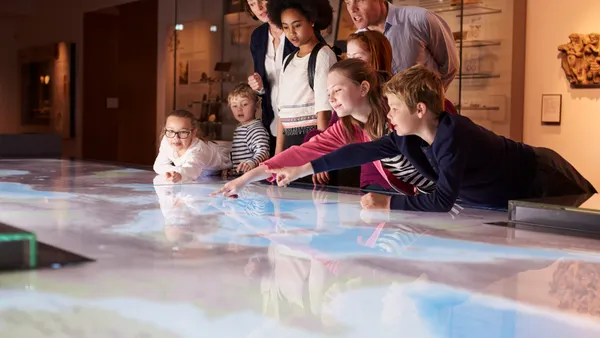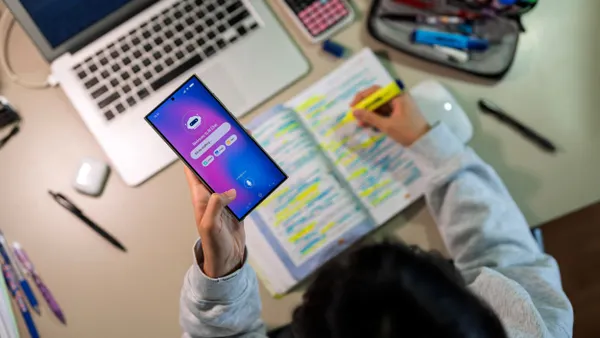Dive Brief:
- By offering students different approaches that they can take to complete their assignments, educators can allow each student to have an option when it comes to expressing what they've learned, given that each student learns differently, Texas-based 4th grade math and science teacher Katie Usher writes for Edutopia.
- Usher is a big proponent of digital portfolios, as these can be expanded with new material as students move from grade to grade, allowing them to additionally show how a student has grown in their work over time.
- While teachers can add some structure to e-portfolios — requiring that they have a specific kind of content, for example — students still have a lot of freedom and ownership in how they’re designed, if educators allow them, and therefore a lot of control over their learning.
Dive Insight:
In education, much emphasis is often placed on finding or selecting the right answer. Certainly, the testing environment has propelled this idea, as well — students are never scored on the ideas they create, but on whether they picked, and bubbled, the right letter in a multiple choice answer set.
But for students to become nimble thinkers and problem solvers, they need to be exposed to curriculum that avoids being too stringent about making sure they follow the right path. Ultimately, administrators should ask themselves whether it matters how students arrived at the right answer as long as they can explain the thought and reasoning that got them there.
Students who get so wrapped up in finding the right answer, and in avoiding the idea of getting an answer wrong, can never learn from their mistakes and stretch themselves to look for alternative paths and solutions. That blocks them from developing higher-level reasoning skills. Creative approaches can therefore be a gateway to breakthroughs, encouraging problem solving and critical thinking.
In math class for example, students can tackle word problems by weaving storytelling into the curriculum, which can boost creative and critical thinking skills, as well as social-emotional learning capabilities. Certainly there are typical ways of finding for "x" in an equation. But there may also be a number of other ways to arrive at an answer. Allowing students to develop their own path to an answer, and to have the freedom to show their work in a method they choose, helps them find their voice, their confidence and some ownership over their own learning.






 Dive Awards
Dive Awards






